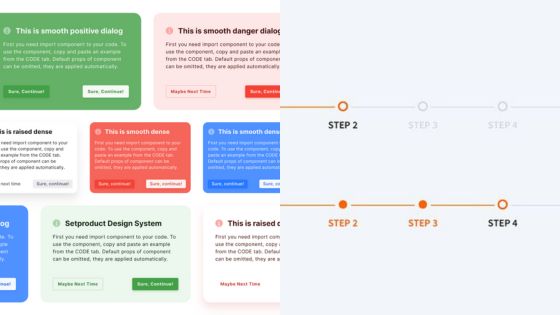

The act of sketching out the process of writing an essay is often reduced to a linear series of steps: collect ideas, draft, revise. What if the writer’s experience of the creative work (or ‘wrestling’) of essay-crafting could be transformed by using strategies developed by designers? The principles of design thinking apply specifically to human-centred design of a system or solving a problem for a particular user. Designers use a structured yet flexible approach that puts the user (here the reader) at the centre. So, how can the application of design thinking to essay-crafting transform it into a more thoughtful, innovative, and reader-focused practice? For students needing support, research papers writer services like Academized offer expert guidance. Academized helps students by providing professional writing assistance, ensuring essays are well-crafted and aligned with academic standards.
Understand the Reader’s Perspective
In design thinking, the first step is to empathise with the user. In essay writing, your ‘user’ is your reader, whether that’s your teacher, a peer or general audience. Before you start writing, think about what your reader wants from your essay. What do they already know about the topic, and what questions do they have? What tone or style will keep them engaged?
Then, by putting yourself in your reader’s place, ask: what might make this essay interesting or illuminating (Remember, you’re writing to communicate.) What concepts can you explain in a way that will make sense for your reader? What will those readers want to know about, to have explained? Whose experiences or examples will you and your reader find resonant? If you can figure this out before you write, not only will you know where you’re going; you’ll be getting there in a way that will make your essay more accessible.
Define the Problem Clearly
The first question to ask yourself is: who am I writing to? Once you know that, then ask: what is the problem my essay is solving? (Analogous to the ‘define’ phase in design thinking, where the clarity and brevity of the stated problem helps to point the way to creative solutions.)
Put another way, in the world of essay production, this means that one needs to develop a good thesis – or main argument. A nice thesis is one that always keeps you and your reader focused. If your essay is unfocused, for any clear purpose, it is likely to feel scattered and disjointed. Or at least it will seem difficult for the reader to find your point. So make sure you know what you’re trying to do with the essay – that is, make sure that the essay has a clear purpose, and one that answers to something the reader cares about or needs to know. If you know what you want the essay to accomplish, if you keep that purpose front and centre – in other words, if you develop a good thesis – the writing is much more likely to stay on track.
Brainstorm and Prototype Ideas
The brainstorming step in design thinking generates a series of possible solutions, and the same holds for an essay: before you write about any topic, the initial ideation phase explores a huge number of possibilities. Some students find it helpful to refer to top research paper services reviews to identify reliable sources for brainstorming assistance, especially when they need expert guidance.
First, spend some time brainstorming the topic – jot down possible approaches to your topic, without self-editing. Get all the crazy ideas down on paper. Next, try ‘prototyping’ these ideas – write a couple of short outlines (or even boilerplate introductory paragraphs, which can be proposals) and see which ideas hold the most water. Prototyping is a process of trying things out quickly, seeing what sticks, and then editing.
What is more, pupils who brainstorm come up with 50 per cent more creative solutions than those who don’t. Pupils who prototype their ideas come up with better final essays by 30 per cent.
Brainstorming and prototyping allows you to see a broader range of angles on the topic, and covering more depth increases the chances of writing a vivid and insightful essay.
Collaborate for Feedback
This is why design thinking is very collaborative, even if writing is a largely solitary activity. Feedback moves your writing forward.
Soliciting feedback means you can witness your essay through another’s lens, often catching gaps or inconsistencies you didn’t see. Below is an illustration to show the significance of this stage:
| Writing Without Feedback | Writing With Feedback |
| Risk of biassed or incomplete arguments | Improved clarity and coherence |
| Limited perspective on reader engagement | Enhanced readability and persuasiveness |
| Higher chance of overlooking errors | More polished and accurate content |
Sharing drafts with others – peers, mentors – exposes your writing to honest criticism that can help produce your best final piece. Collaboration doesn’t dilute your ownership of the piece; it just helps you produce an essay better endowed with other people’s perspectives.
Test Your Ideas and Revise
With feedback now in hand, you can ‘test’ your essay and then ‘polish’ it, just as you would ‘test’ and ‘polish’ prototypes in design thinking.
Editing an essay generally means more than correcting grammar and spelling typos. It requires critical consideration of effectiveness: are your ideas clearly conveyed to the reader? Does the argument actually get to where you want it to go, or have you left any gaps? Does your evidence successfully support the thesis you wish to argue? Does the essay move logically from one point to another?
Think of revision as iterative improvement. If major revisions strengthen your essay, take heart and make them. Be elastic; let go of the idea that your first draft must be perfect. Through testing and revising, your final draft can be.
Reflect on the Process
When you’re done writing your essay, the last step is reflection. Think about the process of writing your essay. What aspects worked well? What do you wish you had approached differently? What would you do differently next time?
Reflection can help you determine your strengths as a writer and where you need to improve. For example, did brainstorming help you generate better ideas? Was the feedback you received useful? And what about revision: do you think revision improved your essay? A teacher or the first two questions, but only you can answer the last one. Giving feedback to others will make you a better reader and writer, while receiving feedback will help you see others’ perspectives and appreciate what they have to say. Over time, reflection will raise your awareness of your own writing habits and help you to develop better strategies for your next assignment.
Conclusion
For essay writing, integrating aspects of design thinking can bring a sense of structure, creativity and empathy. By nailing the audience, defining a problem, brainstorming, getting input from others, revising, and reflecting on the process, the writer better positions herself when writing and rewriting essays. Design thinking encourages flexibility in essay writing, making it more dynamic, versatile and hopefully, more effective for writer and reader alike.
- 22shares
- Facebook0
- Pinterest22
- Twitter0



